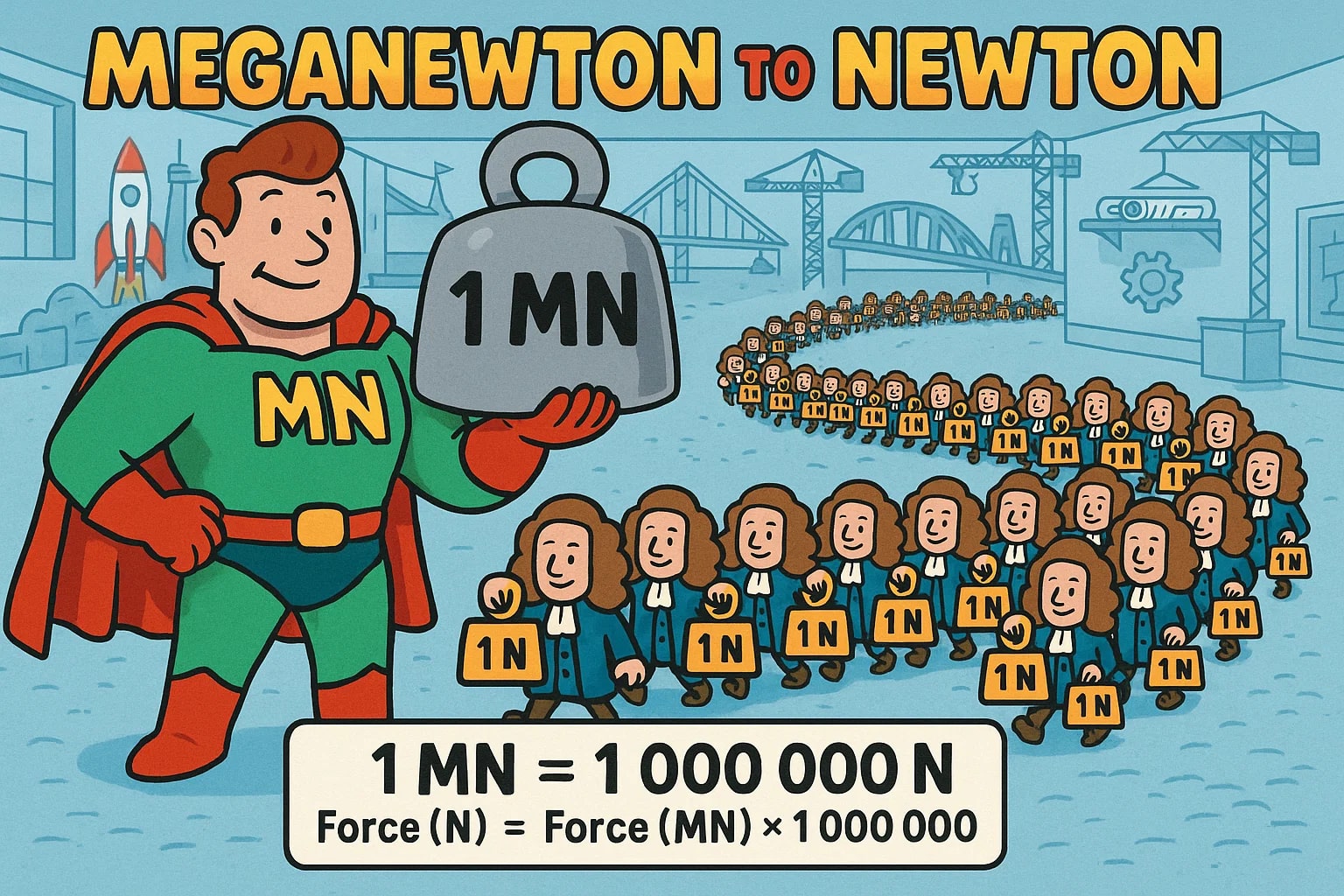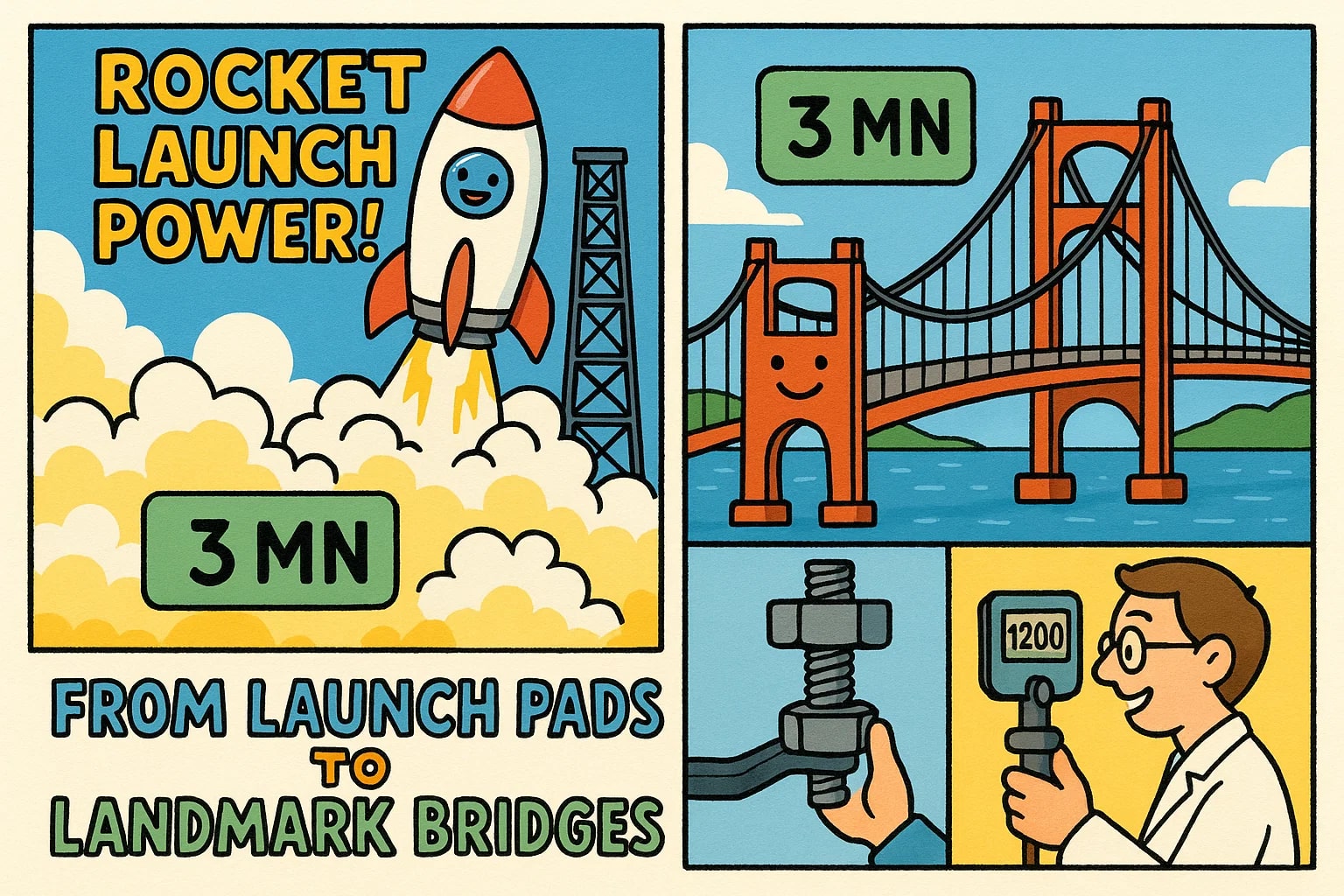Meganewton to Newton – How to convert MN to N
Ever looked at a figure in meganewtons and wondered what it really means in newtons? The math is simple, but the scale tells a bigger story. Let’s break down these force units, how to convert them, and why they show up in everything from rocket launches to megastructures.
Meganewton (MN): built for massive forces
A meganewton is a force unit equal to one million newtons. Expressed as 1 MN = 1 000 000 N, it’s designed for engineering and aerospace contexts where forces are simply too large to express conveniently in newtons alone.
For perspective, the Falcon 9 rocket’s first stage produces about 7.6 MN of thrust. Without this unit, engineers would be writing 7 600 000 N every time — a headache for reports and calculations.
Newton (N): the base unit we all know
The newton, the SI standard unit of force, is defined as the amount required to accelerate 1 kg by 1 m/s². It’s used universally, from measuring everyday forces to complex structural loads.
While a single newton is easy to grasp — about the force of lifting 100 g — large-scale systems can rack up millions of them, which is why meganewtons exist in the first place.

How to switch between MN and N
The conversion factor is straightforward:
1 MN = 1 000 000 N
Force (N) = Force (MN) × 1 000 000
Example:
If a bridge cable is designed to handle 2.4 MN, how many newtons is that?
2.4 MN × 1 000 000 = 2 400 000 N.
So, 2.4 MN = 2 400 000 N.
Need other force unit conversions? Try Jetcalculator’s Force Converter or explore more with Conversion tools.
Did you know?
-
One meganewton equals the weight force of about 102 000 kg on Earth — roughly the mass of a fully loaded Boeing 737.
-
The Saturn V rocket for Apollo missions produced a liftoff thrust of nearly 34 MN.
-
Heavy industrial hydraulic presses can exert more than 150 MN to stamp and shape automotive steel.
-
A 1 MN force over a 10 m² area creates a pressure of 100 kPa, about the same as the air pressure at sea level.
-
The cables of the Millau Viaduct in France withstand forces of several meganewtons to keep the structure stable in high winds.
From launch pads to landmark bridges
Meganewtons and newtons work hand in hand across industries. Aerospace engineers use meganewtons to describe rocket thrust and launch loads, while civil engineers rely on them for bridge supports and skyscraper foundations.
At the same time, technicians and researchers still use newtons for smaller forces — from bolt tension checks to lab-scale testing. Converting between the two ensures every figure, large or small, stays consistent and easy to work with.

Keeping your numbers clean and clear
Massive forces don’t need to turn into messy, unreadable strings of zeros. Converting meganewtons to newtons — or vice versa — helps keep reports precise and scales appropriate.
Whether you’re calculating rocket thrust, structural loads, or industrial press capacities, get quick results using Jetcalculator’s Conversion tools or the dedicated Force Converter. One conversion is all it takes to move seamlessly between engineering’s biggest and most familiar units.

